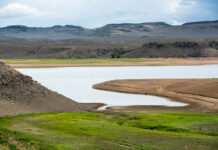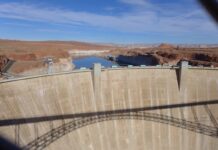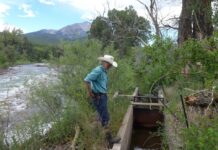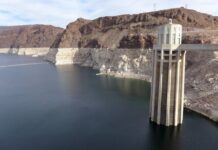Colorado Reservoirs at 85% of average capacity, with little recovery expected summer rains may...
Drought and decreased snowpack have left Colorado reservoirs below average capacity levels.
State officials looking for engagement on updated water plan
State officials are hoping dire climate predictions and water shortages will convince Coloradans to get involved in planning how to share a dwindling resource.
Recent drop in Lake Powell’s storage shows how much space sediment is taking up
A new study shows that sedimentation from the Colorado River means that Lake Powell's storage capacity is lower than previously believed.
Crystal River rancher, Water Trust again try to boost flows
A Crystal River Valley rancher and a nonprofit organization are teaming up for the second time to leave more water in a parched stream.
60 days and counting: Colorado River cutbacks achievable, experts say, as long as farm...
Colorado River Basin states have 60 days to come up with a water reduction plan.
Race is on for Colorado River basin states to conserve before feds take action
Seven states in the West have been given until August 15th to implement new strategies and tools to conserve the Colorado River.
Declining levels at Lake Powell increase risk to humpback chub downstream
Low levels and warming waters threaten to increase invasive species in the Colorado River.
Ute Mountain Ute Tribe faces another devastating drought year, but recent rain, wheat prices...
Low snowpack and high temperatures have plagued water supplies in southwest Colorado, but high wheat prices bring hope to the Ute Mountain Ute Tribe.
Pitkin County agrees to fund ditch piping project
The Pitkin County Board of County Commissioners has approved funding toward a ditch piping project to keep more water in Hunter Creek.
Two Southwest tribes raise concerns over uranium storage
In Utah, a pool of toxic waste is emitting dangerous amounts of radon to the surrounding communities, including the Ute Mountain Ute Tribe.












